Jellyfish, a mysterious marine creature, has appeared on Earth hundreds of millions of years ago. Their soft bodies are umbrella-shaped, and look like a crystal clear transparent umbrella. Different types of jellyfish vary greatly in size. For larger jellyfish, the cap diameter can even reach an astonishing 2 meters.
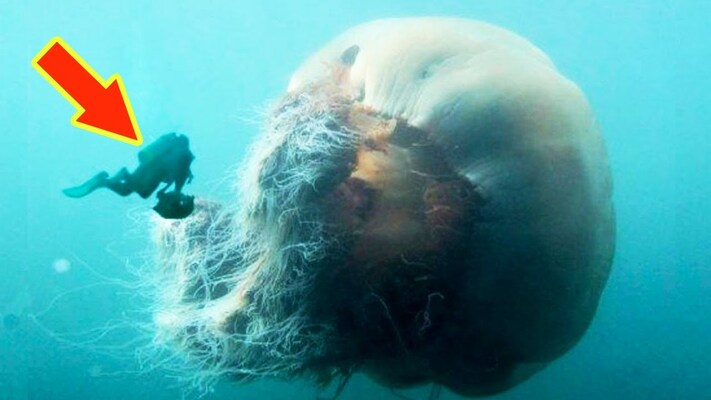
So, do you know what giant jellyfish there are in the world? Today, we will take stock of the world's top ten largest jellyfish, including: Lion's Mane Jellyfish, Nomura Jellyfish, Portuguese Man-of-War, Stygian Jellyfish, Shark Jellyfish, Pacific Golden Jellyfish, Red Moon Jellyfish, etc. Let's walk into this giant jellyfish world floating in the deep sea.
1. Lion's Mane Jellyfish (umbrella diameter 2.29 meters/tentacles 36.6 meters)
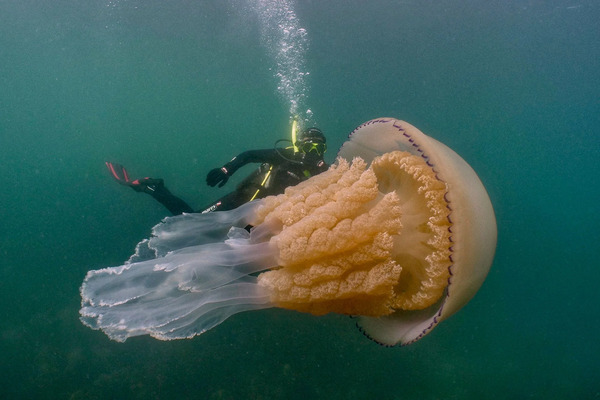
Lion's Mane Jellyfish, also known as Arctic jellyfish or hair jellyfish, belongs to the family of jellyfish and is the largest jellyfish species known so far. It mainly inhabits cold waters such as the Arctic Sea, the North Atlantic and the North Pacific, and rarely appears in areas south of 42 degrees north latitude. Its name "Lion's Mane Jellyfish" comes from its dense and long orange-red tentacles, which look like the mane of a lion.
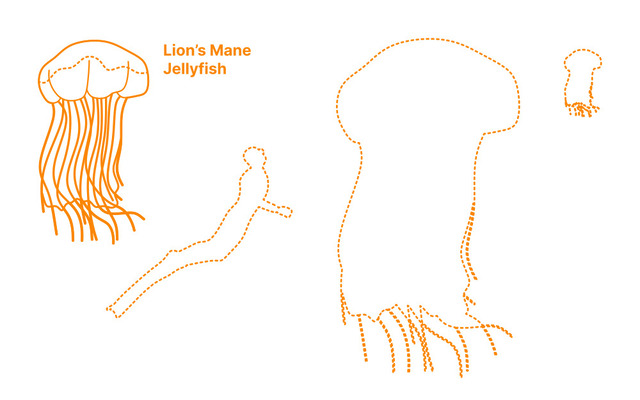
The umbrella of the lion's mane jellyfish is usually up to 2 meters in diameter, weighing between 200 and 400 kilograms. The tentacles are divided into eight groups, with a total of up to 150, and some individual tentacles are even longer than 35 meters. Although the umbrella diameter of most lion's mane jellyfish is usually around 50 cm to 1 meter, there are occasionally extremely large individuals. The largest lion's mane jellyfish on record has an umbrella diameter of 2.29 meters and the longest tentacle extends to an astonishing 36.6 meters, which can be called a giant in the ocean.
2. Nomura jellyfish (umbrella diameter 2-3 meters)
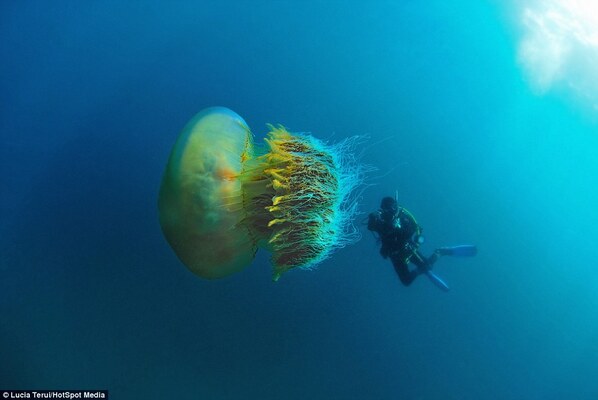
Nomura jellyfish, also known as Echizen jellyfish, is one of the largest jellyfish species. If the "umbrella diameter" is used as a standard to measure the size of jellyfish, then Nomura jellyfish is undoubtedly the largest jellyfish species in the ocean. This jellyfish often appears in the waters from the Yangtze River Delta to the Sea of Japan, with a large number and occasional explosive proliferation. It can weigh up to 200 kilograms, and the width of the umbrella is equivalent to the height of an adult, generally exceeding 1 meter in diameter, and some individuals can even reach 2 to 3 meters.
Although its "width" is amazing, its tentacles are not as long as those of the lion's mane jellyfish, so it is slightly inferior in the competition of "the world's largest jellyfish". However, in terms of the overall spectacular size, the Nomura jellyfish is still one of the well-deserved sea monsters.
3. aquarium/portuguese-man-of-war.html">Portuguese man-of-war (tentacles over 25 meters)
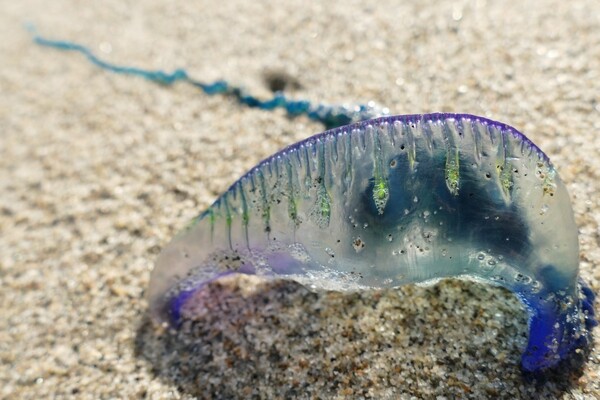
aquarium/portuguese-man-of-war.html">Portuguese man-of-war, also known as ghost jellyfish, is a very mysterious marine creature. They have a sail-like luminous membrane crown on their top buoy, which can adjust the direction of the buoy and use the wind to drift slowly on the water like a sailboat. Unlike other active jellyfish, aquarium/portuguese-man-of-war.html">Portuguese man-of-war cannot swim independently, and their movement depends entirely on the propulsion of sea breeze and ocean currents.
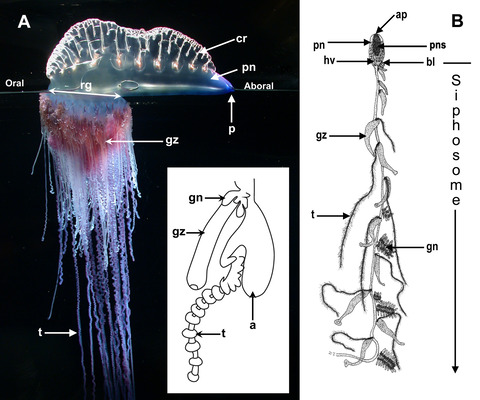
Because it cannot actively hunt prey, the Portuguese man-of-war has evolved organs that can emit blue fluorescence. This weak and charming blue light has a natural attraction to many marine creatures, helping them to lure nearby prey. As one of the larger members of the jellyfish family, according to records of marine biologists, the average tentacles of the Portuguese man-of-war can reach 15 meters in length. There are records showing that individual tentacles of super-giant Portuguese man-of-war exceeding 25 meters have been found, which can be called the "ghost ship" in the sea.
4. Stygian jellyfish (umbrella diameter is about 1.4 meters)
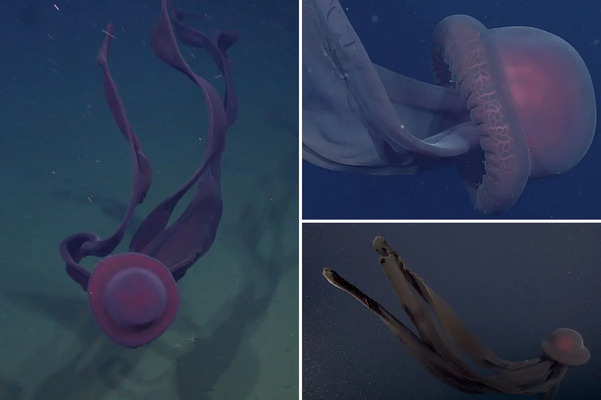
The Stygian jellyfish is one of the world's top ten giant jellyfish, known for its mystery and rarity. Although only about 116 sightings have been recorded in the past 110 years, scientists generally believe that this deep-sea jellyfish is actually widely distributed in many seas around the world, including the Atlantic, Pacific and Arctic Oceans.
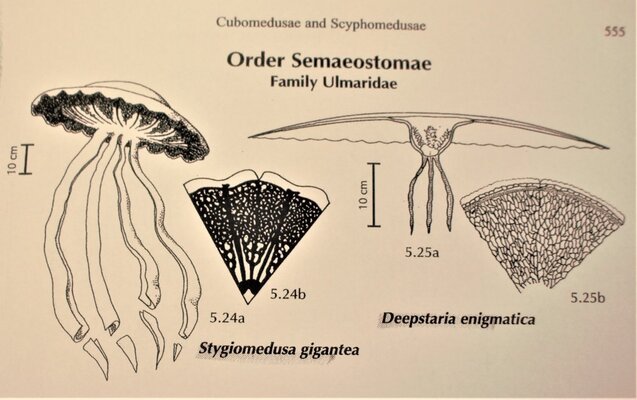
The Stygian jellyfish mainly inhabits areas with a depth of about 500 to 2000 meters in the ocean. It is one of the largest known invertebrate carnivores in the deep-sea ecosystem. According to existing records, its maximum umbrella diameter can reach 1.4 meters, and the overall length including the tentacles can reach about 11 meters. Its size is very amazing and it is a giant in the deep sea that cannot be ignored.
5. Shark jellyfish (maximum umbrella diameter exceeds 1 meter)
Shark jellyfish is a large deep-sea jellyfish that was first discovered and named by the Monterey Bay Aquarium Research Institute in the United States in 2003. Because of its large size and red body, it is also called the "big red jellyfish".
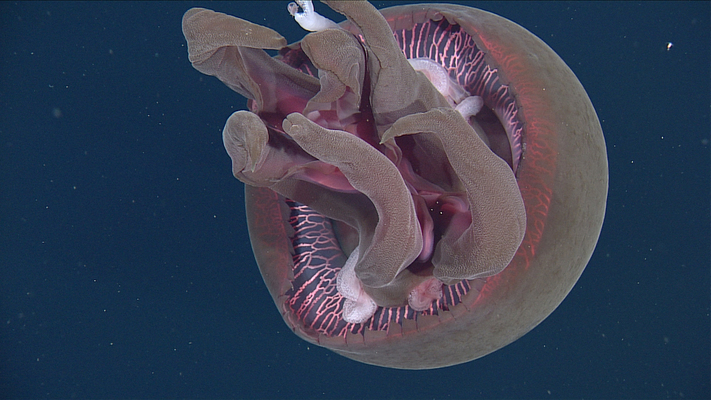
This jellyfish mainly lives in the middle layer of the ocean, with a distribution depth of about 400 to 1500 meters. Currently, there are sporadic records in many waters of the Pacific Ocean. The umbrella of the shark jellyfish is hemispherical, and the bright crimson color is very recognizable. The diameter is usually between 45 and 75 cm, and some individuals can even exceed one meter. Its umbrella edge has a large number of marginal petals, but it does not have umbrella edge tentacles, which is one of the important characteristics that distinguishes it from other jellyfish.
6. Pacific Golden Jellyfish (umbrella diameter 0.5-1 meter/length 3.6-4.6 meters)
The Pacific Golden Jellyfish is one of the larger known jellyfish. It is mainly distributed in the eastern Pacific Ocean, extending from the coast of Canada to the Mexican coast. It is most common along the coast of California and Oregon. It has also been found in the waters of Japan.
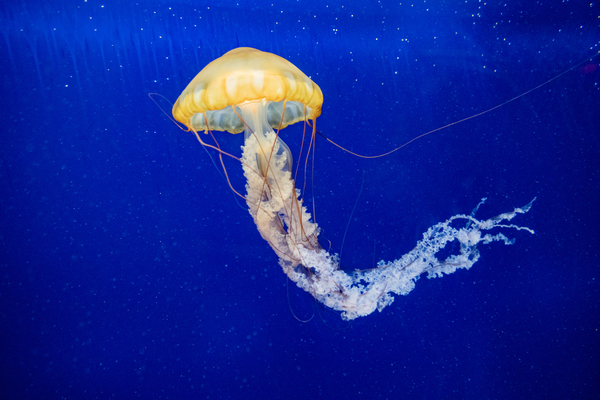
This jellyfish is highly recognizable, with a golden color and a light red hue. Its umbrella body can reach a diameter of 50 to 100 cm, with 24 chestnut tentacles and a length of about 3.6 to 4.6 meters. Although it has the ability to sting, it is less toxic to humans and is not very dangerous. The Pacific golden jellyfish is a typical carnivorous jellyfish that feeds on plankton, crustaceans, small fish and other jellyfish.
7. Red Moon Jellyfish (up to 1 meter in umbrella diameter)
The red moon jellyfish, also known as "jellyfish", looks like a mushroom. Its body is mainly composed of two parts: the umbrella and the mouth arm. The umbrella is hemispherical, usually 30 to 60 cm in diameter, and some individuals can reach up to 1 meter. Its outer umbrella is smooth and delicate, the middle gelatinous layer is thick, and the whole is transparent and crystal clear, which is highly ornamental.
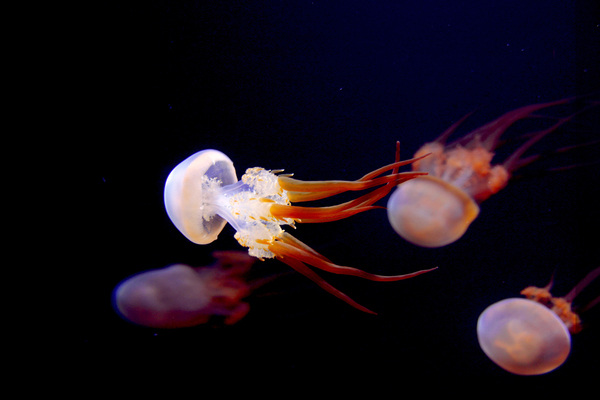
Interestingly, the red moon jellyfish has a symbiotic relationship with a single-cell algae called zooxanthellae. These algae produce oxygen through photosynthesis and supply some of the products to the jellyfish. Therefore, the red moon jellyfish is suitable for living in a weak light environment. It is recommended to control the light intensity below 2400 lux, and it can be used with coral blue light, and the lighting time does not need to be too long.
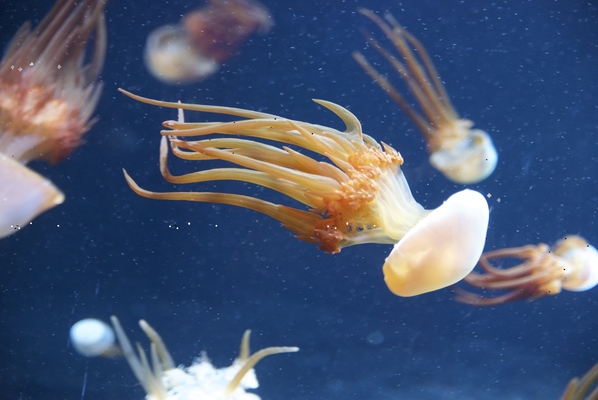
In addition to its ornamental value, the red moon jellyfish is also valuable in terms of food and medicine. It is rich in protein, carbohydrates, calcium, iodine and various vitamins, and is a highly nutritious marine food. Traditional Chinese medicine believes that jellyfish has the effects of clearing heat and detoxifying, resolving phlegm and softening hard masses, lowering blood pressure and reducing swelling. It is often used in medicine or medicinal food, and can be called a "treasure in the sea" with both deliciousness and efficacy.
8. Barrel jellyfish (maximum umbrella diameter exceeds 0.9 meters)
Barrel jellyfish were first discovered in the northeastern Atlantic and Mediterranean regions and are one of the largest jellyfish species in British waters. Although they have the ability to sting, they usually do not cause serious harm to humans and mainly feed on plankton.
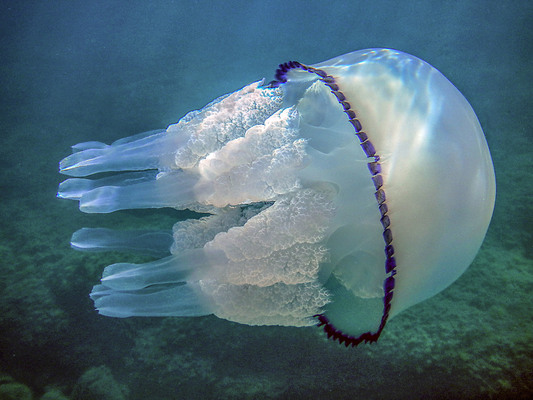
In 2015, thousands of giant barrel jellyfish suddenly appeared near many popular coasts in the UK, attracting attention. On the coast of Dorset, England, people witnessed a group of "monsters" - giant barrel jellyfish that can be up to 1.5 meters long and weigh up to 32 kilograms. It is speculated that this surge in numbers may be related to the reduction in the number of natural enemies in their juvenile stage due to overfishing by humans, allowing their population to grow on a large scale. The diameter of the barrel jellyfish umbrella can generally reach about 0.9 meters, and the overall appearance is spectacular. It is one of the giant jellyfish commonly seen in the British coastal waters.
9. Purple-striped sea thorn jellyfish (maximum umbrella diameter exceeds 0.7 meters)
Purple-striped sea thorn jellyfish is a large jellyfish species, mainly distributed in the Pacific Ocean. Its umbrella is light pink in the larval stage, with eight slender and black tentacles on the edge; as it grows, the color of the umbrella gradually turns to light purple, and the tentacles become short and strong.
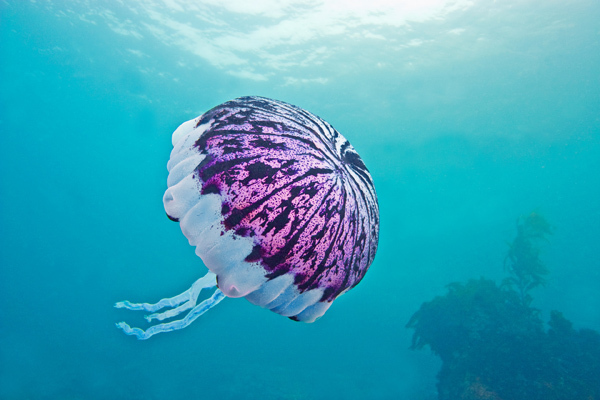
This type of jellyfish is visually attractive due to its hazy and dreamy light purple appearance. The long tentacles are quite similar to Pacific sea thorns, adding a bit of mystery and romance. The umbrella of an adult purple-striped sea thorn can reach a maximum diameter of 70 cm. It mainly feeds on small crustaceans, mollusks, fish eggs and other small jellyfish. It is one of the most eye-catching large jellyfish in the ocean.
10. Australian spotted jellyfish (umbrella diameter 0.5-0.6 meters)
The Australian spotted jellyfish is a large jellyfish with a maximum umbrella diameter of 50 to 60 cm. It is mainly distributed in the southwest Pacific Ocean. It feeds on tiny plankton in the ocean. Its main prey includes krill, brine shrimp, algae and moon jellyfish, and it itself is often preyed by giant poached egg jellyfish.
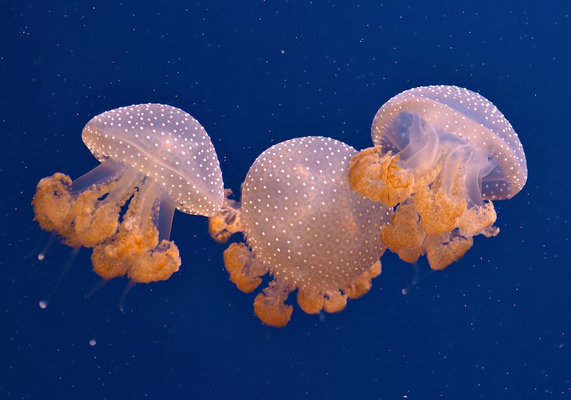
In order to enhance its survival ability, the Australian spotted jellyfish has evolved a strong defense mechanism. For example, the white spots on its umbrella are not only decorative, but also have stinging cells, which have certain attack and defense capabilities. When it hunts, it stretches its rear tentacles to catch prey.

The jellyfish umbrella is hemispherical, light blue in color, covered with tiny white spots, and has great visual value. Its arms are flower-shaped, with trailing tentacles at the end, and it has the ability to photosynthesize with symbiotic algae, which can provide itself with additional energy supply.
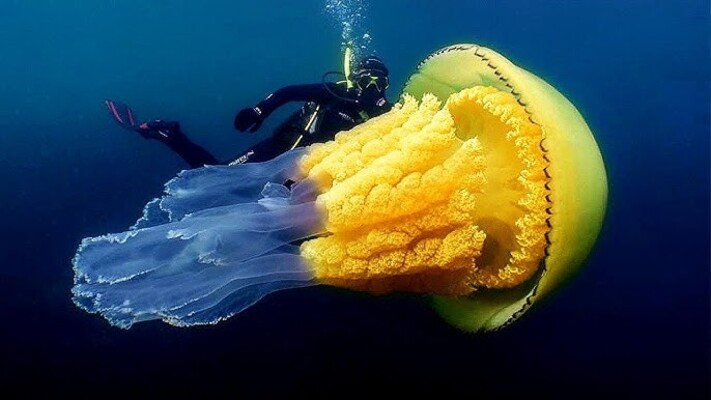
The world's 10 largest jellyfish are mainly recommended based on data such as jellyfish umbrella diameter and body length, and with comprehensive reference to relevant information on the Internet. The data is as of April 2, 2025. If you have any questions, please comment/criticize at the end.
Other famous large jellyfish:
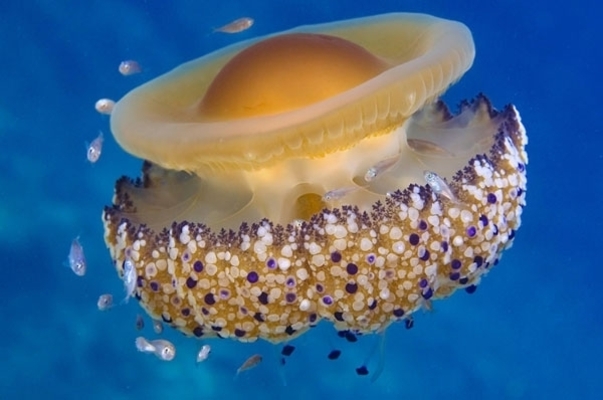
Egg yolk jellyfish
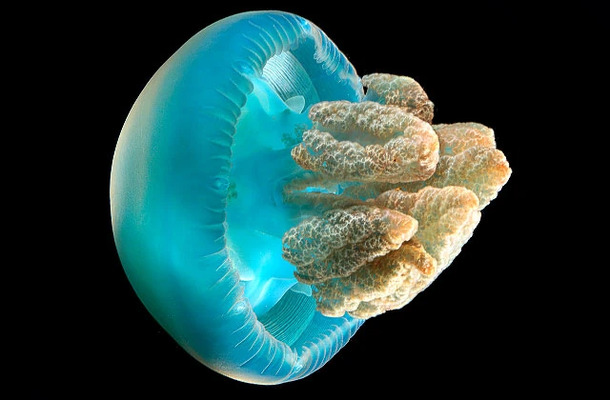
Mosaic jellyfish
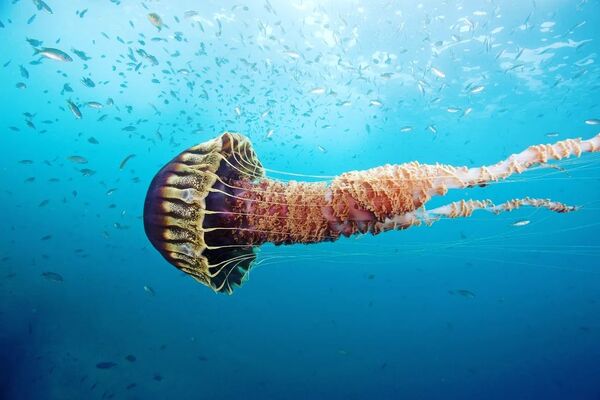
Black star sea jellyfish
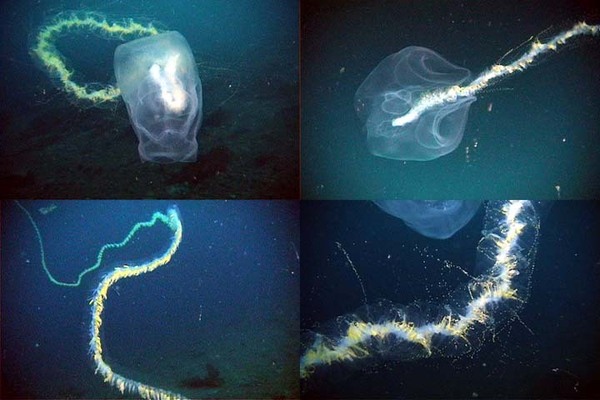
Paraya jellyfish

Australian box jellyfish
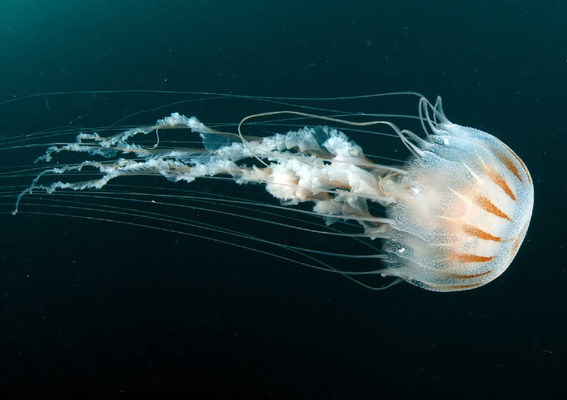
Atlantic sea jellyfish
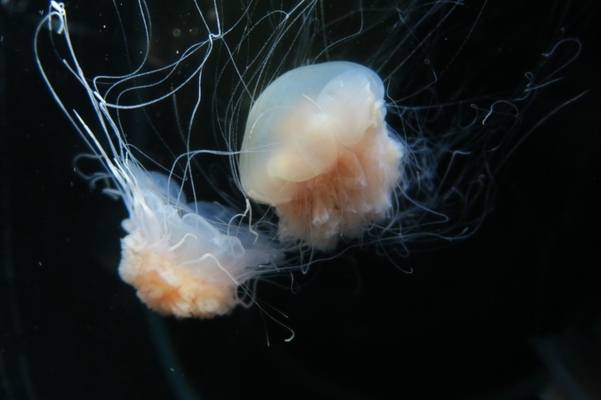
White jellyfish
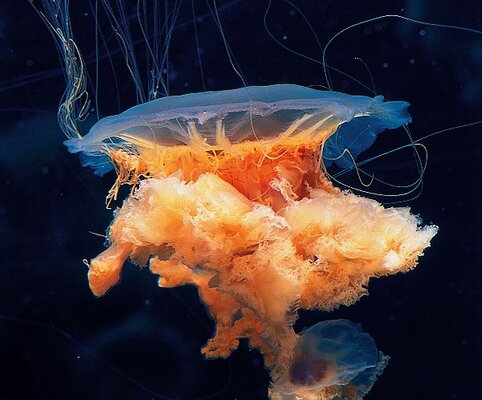
Brown jellyfish, etc...
animal tags: jellyfish
We created this article in conjunction with AI technology, then made sure it was fact-checked and edited by a Animals Top editor.